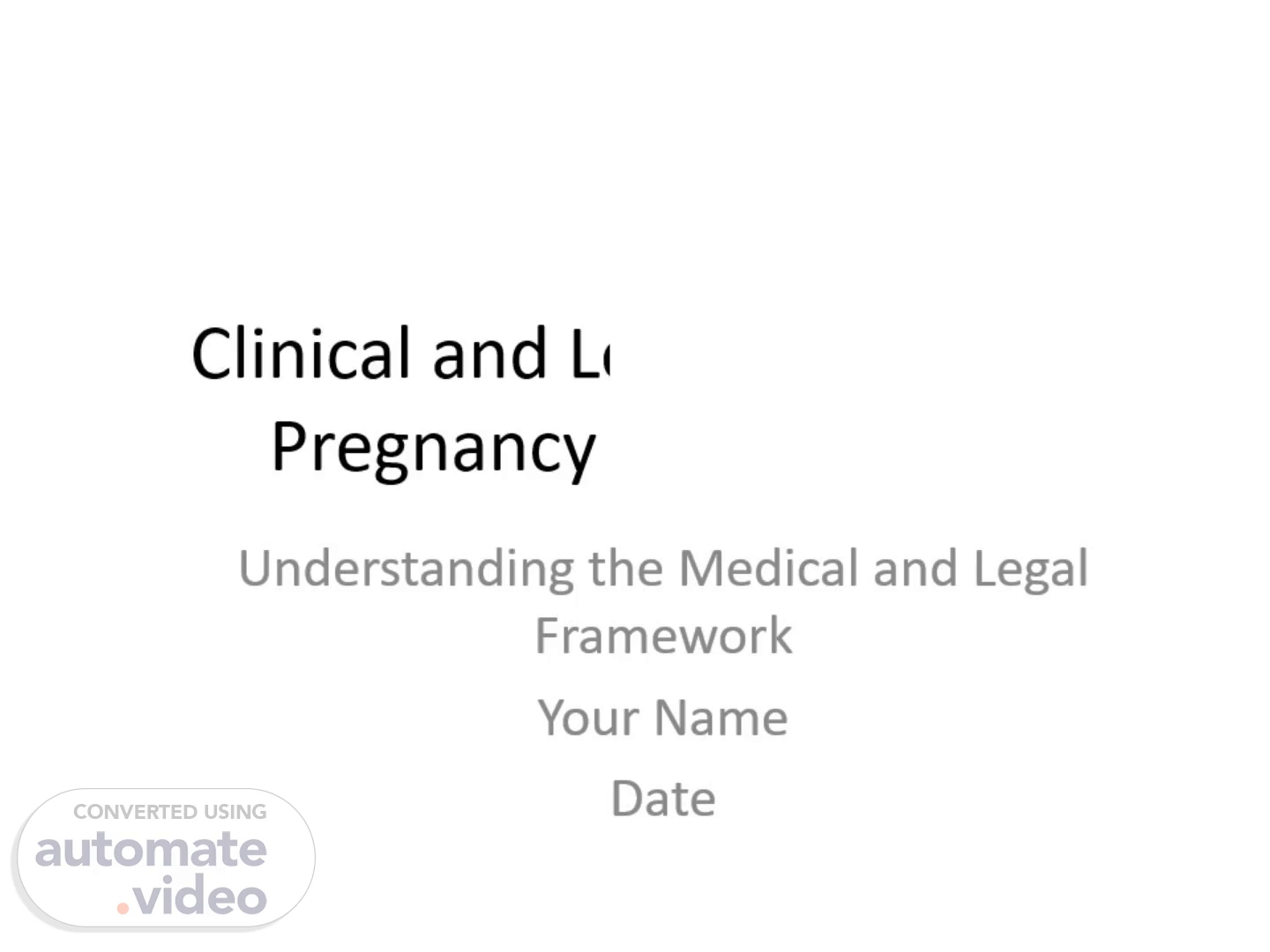Scene 1 (0s)
Clinical and Legal Aspects of Pregnancy Termination.
Scene 2 (8s)
Introduction to Pregnancy Termination. Definition: Explanation of what pregnancy termination (abortion) means. Purpose: Reasons why individuals might consider termination (e.g., health risks, fetal abnormalities, personal choice). Types of Termination: Medical (medication-induced) and surgical procedures..
Scene 3 (23s)
Clinical Aspects. Methods of Termination: - Medication: Up to 10 weeks (mifepristone and misoprostol). - Surgical: Vacuum aspiration, dilation, and evacuation. Risks and Complications: Infection, heavy bleeding, and rare but serious complications. Considerations for Providers: Importance of patient safety, confidentiality, and informed consent..
Scene 4 (40s)
Psychological and Social Implications. Mental Health: Potential psychological impacts, including emotional responses and coping mechanisms. Social Factors: Stigma, cultural views, and impact on relationships. Support Systems: Importance of counseling and social support for individuals undergoing the procedure..
Scene 5 (55s)
Legal Aspects. Varied Legal Frameworks: Overview of how laws vary internationally and within different regions. Gestational Limits: Legal restrictions based on pregnancy stage. Rights of the Individual: Balancing patient autonomy with fetal considerations in the law..
Scene 6 (1m 9s)
Ethical Considerations. Medical Ethics: Issues surrounding autonomy, beneficence, and non-maleficence. Debates: The moral and ethical arguments for and against termination (e.g., rights of the fetus vs. rights of the mother). Provider’s Role: Navigating personal beliefs and professional obligations..
Scene 7 (1m 25s)
Conclusion and Key Takeaways. Summary: Recap of the key clinical and legal points covered. Current Trends: Brief mention of ongoing debates, evolving laws, and public opinion. Closing Thought: Emphasis on the importance of informed, compassionate, and respectful care for all individuals..
